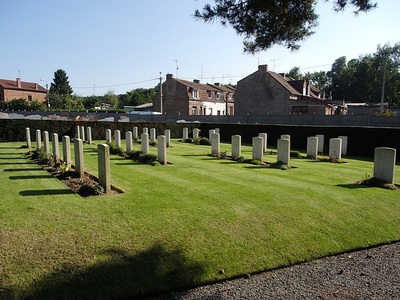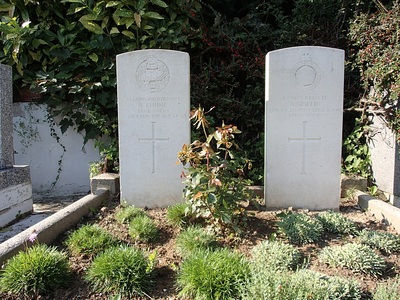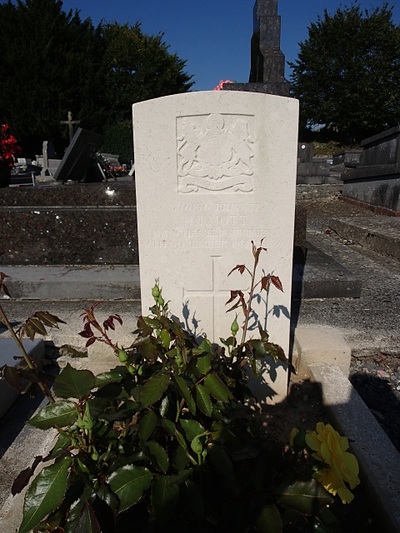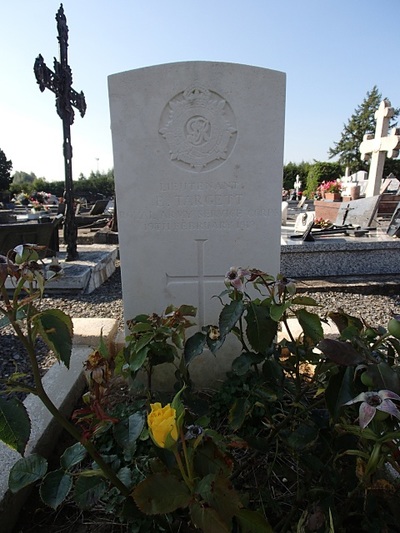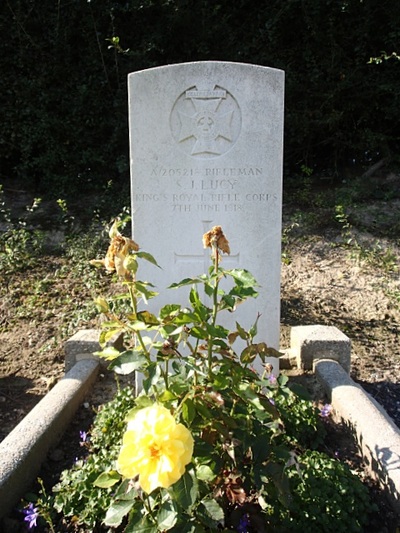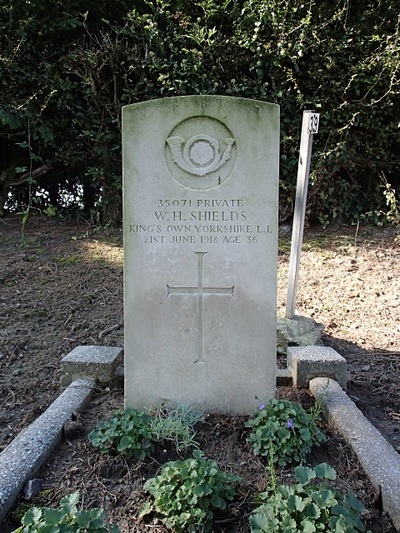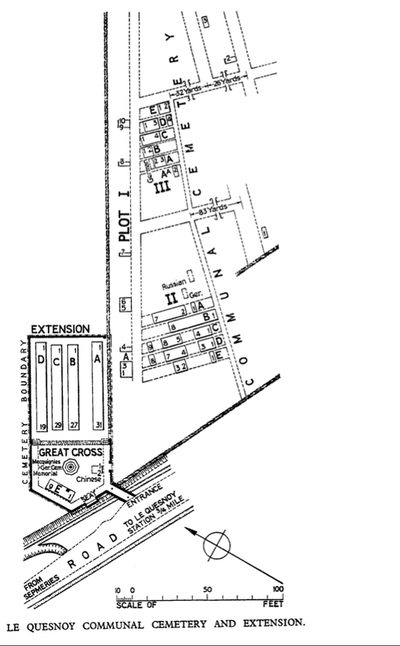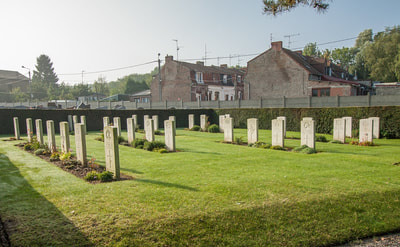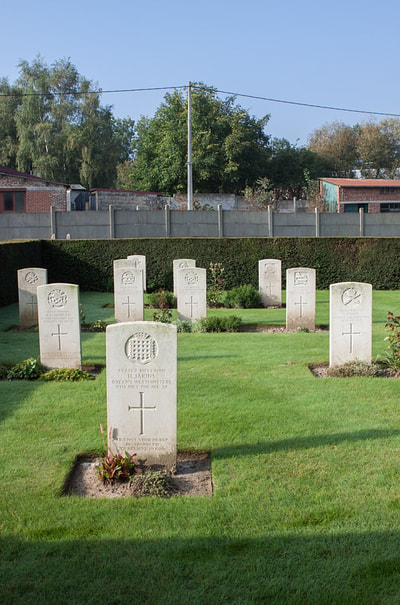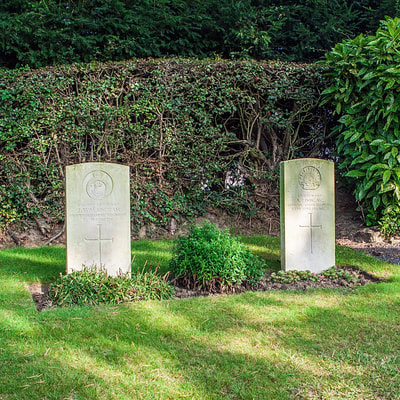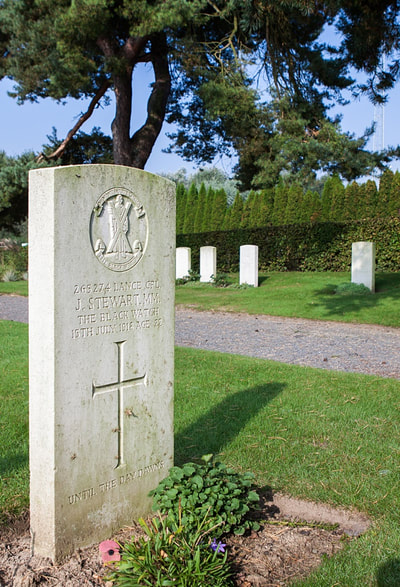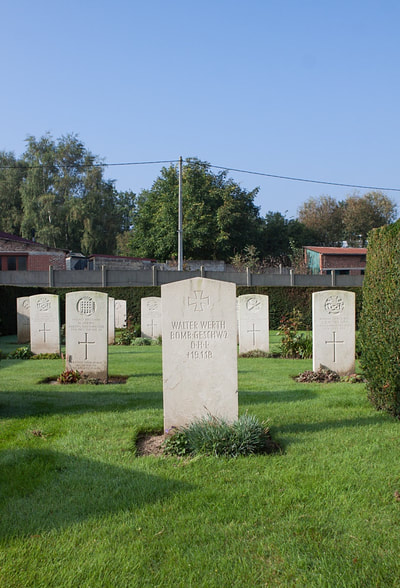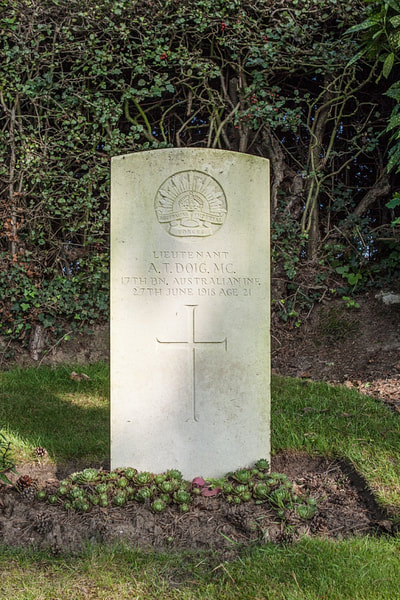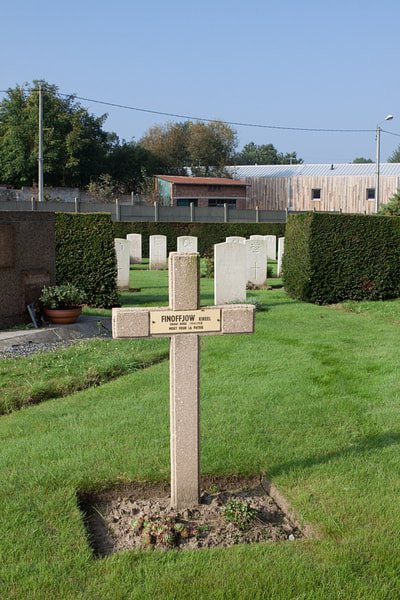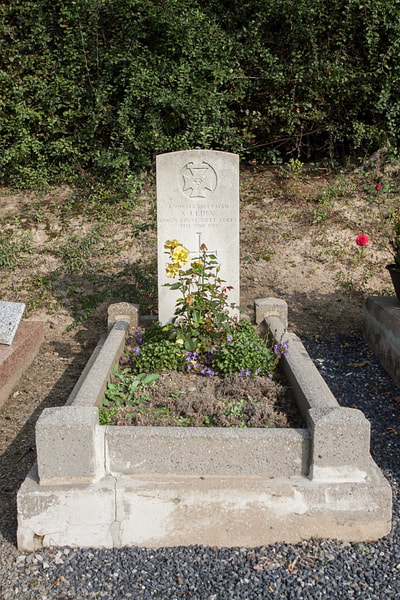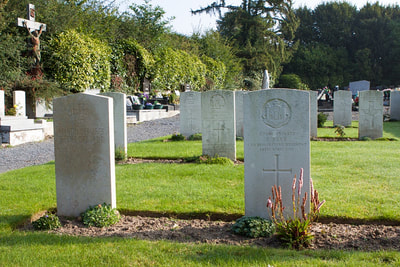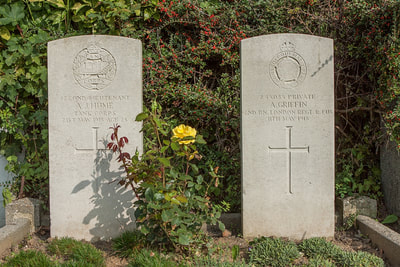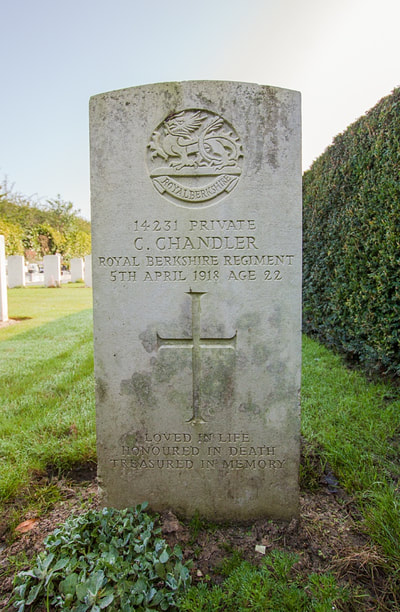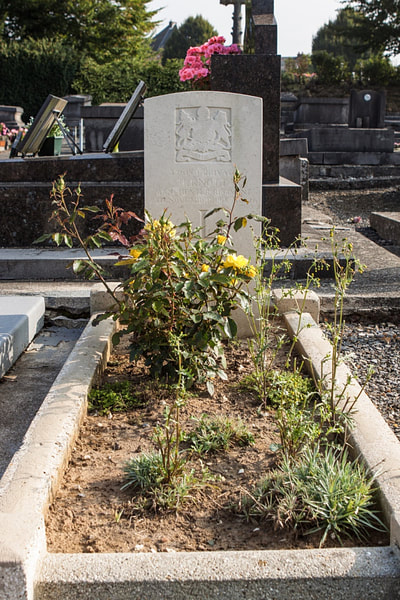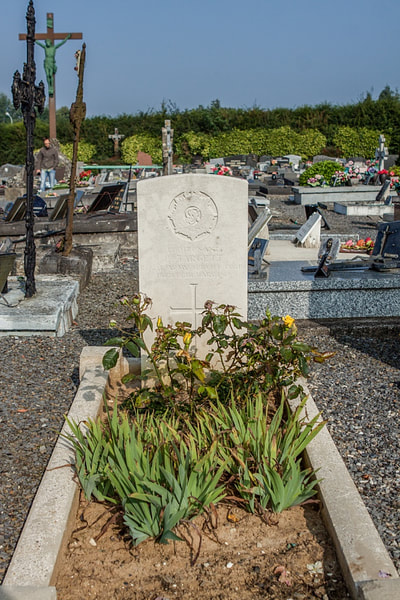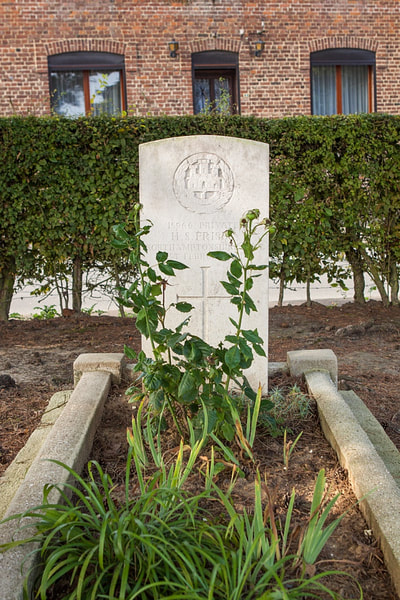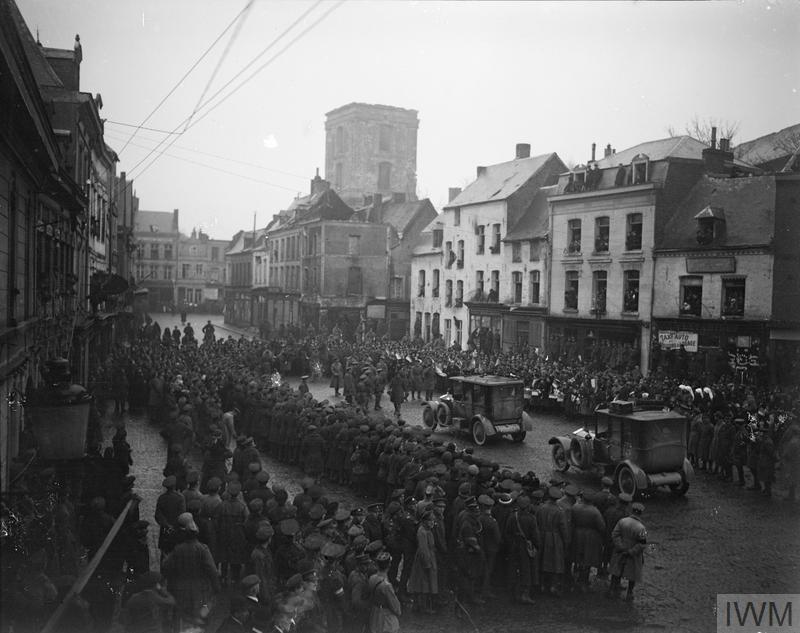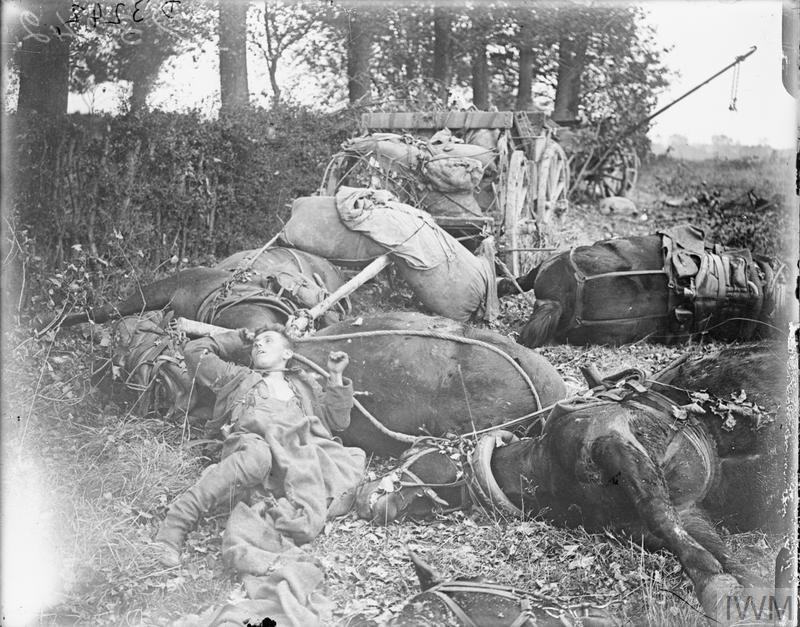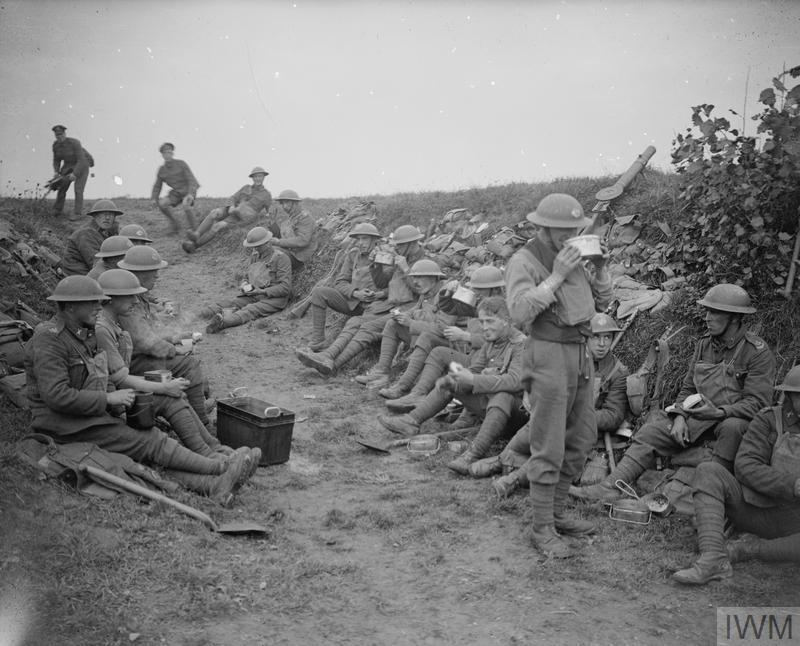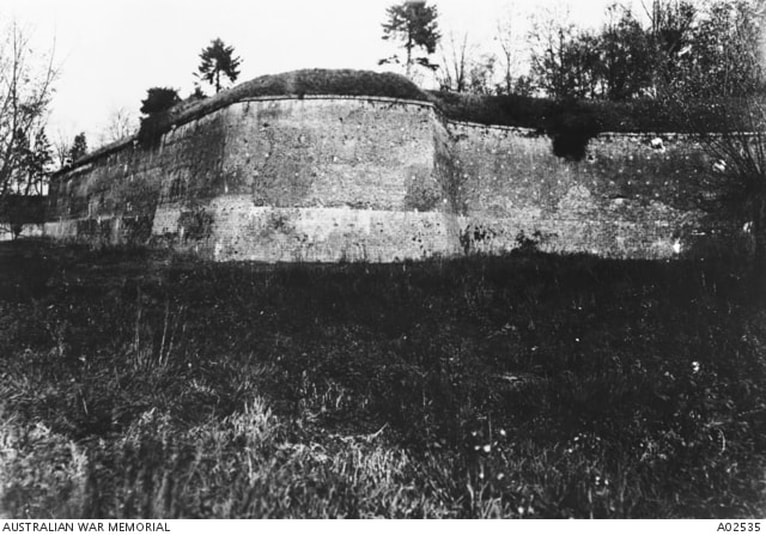LE QUESNOY COMMUNAL CEMETERY
Nord
France
Location Information
Le Quesnoy is an old town in the Department of the Nord, 15 kilometres south-east of Valenciennes on the road to Le Cateau and Avesnes. The Extension adjoins that part of the Communal Cemetery where British graves are placed.
Visiting Information
Wheelchair access with some difficulty.
Historical Information
Le Quesnoy was captured by the New Zealand Division, without bombardment, on the 4th November, 1918; and a sculptured panel let into the town wall, linked with the Place D'Armes by a memorial avenue, recalls this exploit.
The Communal Cemetery was used and extended by the Germans during their long occupation of the town; but almost all the German graves have been removed to Frasnoy German Cemetery.
There are now over 60, 1914-18 war casualties commemorated in this site. All but two of whom were buried by the enemy.
Casualty Details: UK 61, Australia 2, Total Burials: 63
Le Quesnoy is an old town in the Department of the Nord, 15 kilometres south-east of Valenciennes on the road to Le Cateau and Avesnes. The Extension adjoins that part of the Communal Cemetery where British graves are placed.
Visiting Information
Wheelchair access with some difficulty.
Historical Information
Le Quesnoy was captured by the New Zealand Division, without bombardment, on the 4th November, 1918; and a sculptured panel let into the town wall, linked with the Place D'Armes by a memorial avenue, recalls this exploit.
The Communal Cemetery was used and extended by the Germans during their long occupation of the town; but almost all the German graves have been removed to Frasnoy German Cemetery.
There are now over 60, 1914-18 war casualties commemorated in this site. All but two of whom were buried by the enemy.
Casualty Details: UK 61, Australia 2, Total Burials: 63
Pictures in gallery below © Werner Van Caneghem
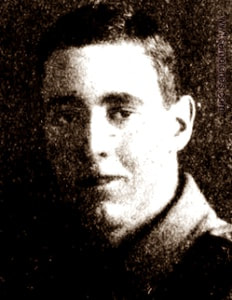
Lieutenant
Allan Torrance Doig, M. C.
17th Bn. Australian Infantry, A. I. F.
27th June 1918, aged 21.
Plot I. A. 6.
Son of Agnes Eadie Doig, of "Cooinor," Turramurra, New South Wales, and the late Alexander Evans Doig. Born at Sydney, New South Wales.
Died from heart failure resulting from wounds to pelvis, buttock and lower arm whilst a prisoner at Le Quesnoy.
Taken prisoner at Morlancourt on 23rd May 1918, an officer from a different battalion wrote to Lieutenant Doig's sister regarding the incident two days later;
"Personally I don't think he is dead, I found this out last night. Allan said he was going out to have a look at the wire, and took a man out with him. Apparently, he saw to the wire and then crawled out further. They were seen by the enemy and fired at by a machine gun. Bullets came close and this man asked Allan if he were hit, and he answered him. More bullets came along and the man came back and reported. Good men were sent out with a stretcher, and although they got to the spot where Allan was last seen, they could not find him, but tracks were seen going in the enemy's direction. It is thought that he was taken into the enemies lines. The only thing to be assumed is that he is wounded and taken prisoner. Had he been dead they would have left him there. Why he went so far is not known. The 17th Bn., had to get a prisoner and it is thought that Allan was trying to get one, so as to save a number of men running risks in a raid."
On 11th June it was confirmed that Allan had been taken prisoner and was being held at Stammlager Limburg an der Lahn in Hesse, Germany, however, a further record shows that Allan died at the German Field Hospital at Le Quesnoy and that he was buried by the German's in the local communal cemetery.
Allan Torrance Doig, M. C.
17th Bn. Australian Infantry, A. I. F.
27th June 1918, aged 21.
Plot I. A. 6.
Son of Agnes Eadie Doig, of "Cooinor," Turramurra, New South Wales, and the late Alexander Evans Doig. Born at Sydney, New South Wales.
Died from heart failure resulting from wounds to pelvis, buttock and lower arm whilst a prisoner at Le Quesnoy.
Taken prisoner at Morlancourt on 23rd May 1918, an officer from a different battalion wrote to Lieutenant Doig's sister regarding the incident two days later;
"Personally I don't think he is dead, I found this out last night. Allan said he was going out to have a look at the wire, and took a man out with him. Apparently, he saw to the wire and then crawled out further. They were seen by the enemy and fired at by a machine gun. Bullets came close and this man asked Allan if he were hit, and he answered him. More bullets came along and the man came back and reported. Good men were sent out with a stretcher, and although they got to the spot where Allan was last seen, they could not find him, but tracks were seen going in the enemy's direction. It is thought that he was taken into the enemies lines. The only thing to be assumed is that he is wounded and taken prisoner. Had he been dead they would have left him there. Why he went so far is not known. The 17th Bn., had to get a prisoner and it is thought that Allan was trying to get one, so as to save a number of men running risks in a raid."
On 11th June it was confirmed that Allan had been taken prisoner and was being held at Stammlager Limburg an der Lahn in Hesse, Germany, however, a further record shows that Allan died at the German Field Hospital at Le Quesnoy and that he was buried by the German's in the local communal cemetery.

